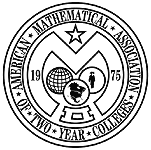
American Mathematical Association of Two-Year Colleges
Strategic Priorities and Goals
2006–2011
Click here to recommend strategies for any of the priorities listed below.
|
|
American Mathematical Association of Two-Year Colleges Strategic Priorities and Goals 2006–2011
|
|
Click here to recommend strategies for any of the priorities listed below. |
|
A. Promote implementation of the Beyond Crossroads principles and standards.
B. Facilitate the successful, seamless transition from high school to two-year college mathematics and from two-year to four-year college or to the workplace.
C. Support classroom research in two-year colleges to enhance student learning.
D. Encourage the use of assessment in courses and programs to enhance student learning.
E. Provide opportunities for student participation in mathematical activities outside the classroom.
A. Expand AMATYC’s role in providing and promoting professional development.
B. Maintain the high quality of the annual conference.
C. Advocate for the importance of continuous professional development for two-year college mathematics faculty.
D. Encourage mentoring of new faculty in the current philosophies reflected in the AMATYC Standards.
A. Increase membership.
B. Increase members’ involvement and satisfaction.
C. Develop external relations with professional organizations.
D. Improve marketing directed at increasing and retaining both individual and institutional members.
A. Serve as a strong voice for two-year college mathematics, and advocate for the needs of two-year college mathematics within all of higher education.
B. Continue to seek support from professional organizations, federal agencies, foundations, and businesses to implement the AMATYC mission and goals.
C. Establish relationships with businesses to accomplish the mission of AMATYC.
D. Develop and mentor two-year college mathematics faculty to take leadership roles in addressing national issues of mathematics education.
E. Increase involvement of AMATYC with key national and international committees and policy‑making boards.
F. Institutionalize representation in Washington, DC, to inform national leaders in government and education of the issues regarding two-year college mathematics.
A. Examine AMATYC's current committee structure to support the AMATYC mission.
B. Analyze the roles and responsibilities of the positions of the Executive Board and selected leadership positions to improve organizational effectiveness.
C. Study the role and composition of the AMATYC Delegate Assembly.
D. Review the organizational structure of the AMATYC Office to optimize resources.
E. Develop a process for responding to current trends and challenges within mathematics education in two-year colleges.